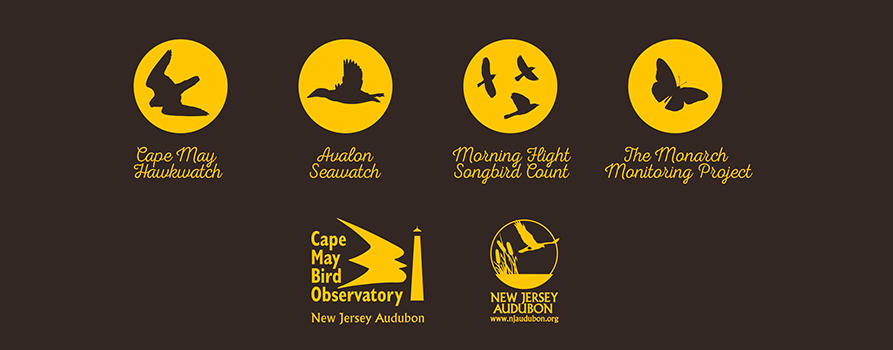After spending a bit of the early morning hours with Doug Gochfeld outside in the yard in Cape May and hearing tons of Veeries, Bobolinks, and warblers, I was anticipating at least a "good" flight at the Higbee dike this morning. Expectations were not entirely met, with only 80 individual warblers (though we did have at least 15 species). Given the wind direction and the early peak of nocturnal calling activity this morning, it seems plausible that birds either kept flying to the south of Cape May or just weren't drifted over the Atlantic enough to provide for a strong northbound flight at Higbees. A few Tricolored Herons and some close raptors were pretty nice, though, and offset the light frustration of a high and diffuse songbird flight. At one point, a Bald Eagle started following a bunker-bearing Osprey out over Delaware Bay, and without much fanfare at all, forced the smaller bird to drop its fish. From what we could see on the dike, neither party ended up with a meal.
Though songbirds mostly played hard to get, today marked the first flyover Connecticut Warblers of the season at the dike. Having grown up primarily birding inland, the phrase "flyby Connecticut Warbler" seemed a bit ridiculous the first time I visited the Dike in Cape May around 10 years ago. Rare but memorable experiences with Connecticuts on the ground have for me involved birds that flushed from low vegetation, paused in the open for only a short while, and then dropped back down to the ground, never to be seen again. Among American birders, at least the ones I know, Connecticut Warblers have a sort of grail status, the pinnacle of elusiveness in warblerdom. Eventually, though, I started to see the darned things in Cape May, and today when I think of the best place to see Connecticut Warbler, I conjure up not images of misty, boreal forest breeding grounds or migrant-prime, thick patches of woods-edge ragweed or goldenrod, but the bayside airspace just north of the woods at Higbees. Fortunately, they are fairly distinctive as far as speedy warbler missiles go, so if you come to the dike or the morning flight platform and "get your eye in" on more common warblers like American Redstarts and Northern Waterthrushes, there is a decent chance of having identifiable and even enjoyable flight looks at your own Connecticut. This warbler migrates through the northeastern US from late August through early to mid October, but it will likely be most abundant (if this bird can even be called "abundant") in Cape May for the next 2-3 weeks. If you are a bit frustrated by flight views and are searching for more soul-fulfilling views of the stocky yellow thrush-warbler, give Hidden Valley a try - the weedy edges there are great for the species (56 were detected there by a songbird banding operation in September 1991) and the site is birded much less heavily than Higbees Beach - you might be even more likely to make your own neat discovery.
While I'm on the subject of predictions, it seems likely from the winds that the next few days in Cape May will be fairly slow flight-wise. Later in the week, perhaps Wednesday night or Thursday, a cold front will sweep through, hopefully bringing with it lots of feathered treasures. Maybe even a Connecticut Warbler...
Location: Cape Island--Higbees Beach SWA--Dike
Observation date: 9/6/10
Notes: ENE wind, cool, clear; excellent visibility. Very weak warbler flight today, but with first 2 Connecticut Warblers for this season's count. Species listed here appeared to be engaged in morning flight behavior.
Number of species: 27
Ruby-throated Hummingbird 5
Northern Flicker (Yellow-shafted) 2
Eastern Kingbird 270
Red-eyed Vireo 1
Red-breasted Nuthatch 9
Blue-gray Gnatcatcher 5
American Robin 12
Cedar Waxwing 4
Tennessee Warbler 1
Northern Parula 6
Chestnut-sided Warbler 1
Magnolia Warbler 1
Cape May Warbler 6
Black-throated Blue Warbler 1
Black-throated Green Warbler 1
Prairie Warbler 1
Palm Warbler 5
Blackpoll Warbler 3
Bay-breasted/Blackpoll Warbler 3
Black-and-white Warbler 3
American Redstart 28
Northern Waterthrush 6
Connecticut Warbler 2
warbler sp. 30
Savannah Sparrow 3
Scarlet Tanager 1
Indigo Bunting 1
Bobolink 340
Baltimore Oriole 5
This report was generated automatically by eBird v2(http://ebird.org)

No comments:
Post a Comment